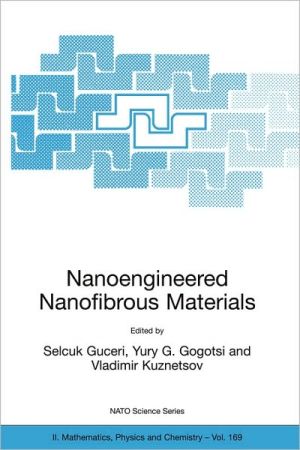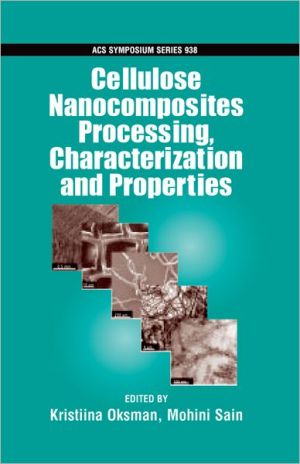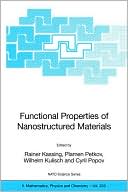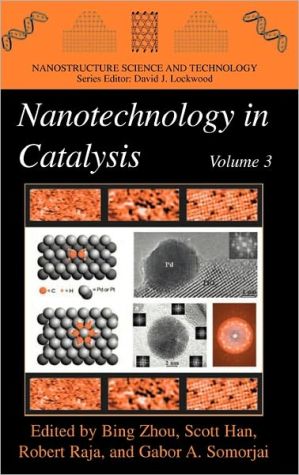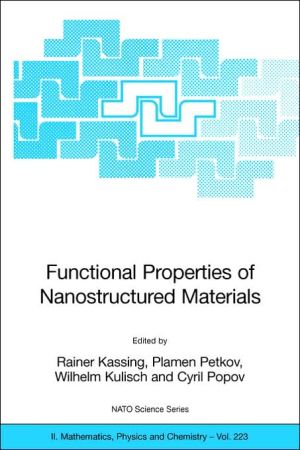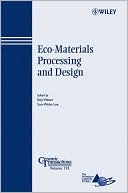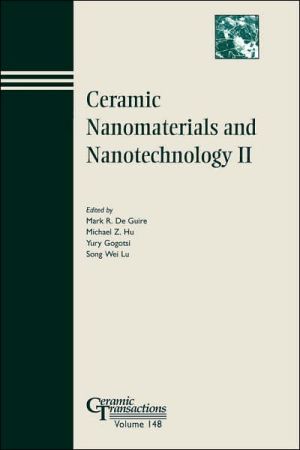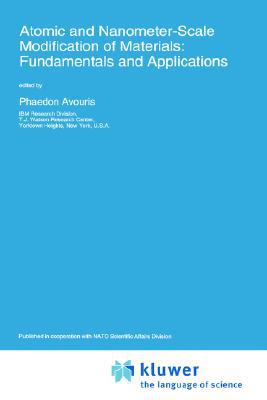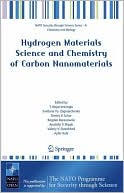Nanoengineered Nanofibrous Materials
The combination of conductive polymer technology with the ability to produce nanofibres will facilitate major new developments in biotechnology and information technology, benefiting such areas as scaffolds for tissue engineering and drug delivery systems; wires, capacitors, transistors and diodes; sensor technology; biohazard protection; and energy transport, conversion and storage.\ The work on nanofibrous materials presented here is designed, first of all, to instruct scientists in the...
Search in google:
The combination of conductive polymer technology with the ability to produce nanofibres will facilitate major new developments in biotechnology and information technology, benefiting such areas as scaffolds for tissue engineering and drug delivery systems; wires, capacitors, transistors and diodes; sensor technology; biohazard protection; and energy transport, conversion and storage.The work on nanofibrous materials presented here is designed, first of all, to instruct scientists in the most advanced methods for the formation of nanofibres and nanotubes. The second section covers the physics and chemistry of nanofibres, while the third deals with computer simulation and modelling. The applications described in section 4 include biomedical applications, nanotube-based devices, electronic applications of nanotubes and nanofibres, nanofluidics, and composites. Finally, the fifth section discusses recent developments in nanomaterials, nanoparticles and nanostructures.
Preface. Group photos. 1: Formation of Nanofibers and Nanotubes Production. 1.1. Nanofiber Technology: Bridging the Gap between the Nano and Macro World; F. Ko. 1.2. Mechanism of Carbon Filaments and Nanotubes Formation; V. Kuznetsov. 1.3. CCVD Synthesis of Single- and Double-walled Carbon Nanotubes; E. Flahaut, et al. 1.4. Precise Semiconductor, Metal and Hybrid Nanotubes, Nanobelts and Nanofibers; V. Prinz. 1.5. Carbon Nanopipettes: Synthesis, Characterization, Properties; R.C. Mani, et al. 1.6. Influence of PLD and CVD Experimental Growth Conditions on Carbon Film: Nanostructure Evolution; E. Capelli, et al. 1.7. Controlled Growth and Networking of Tapered Carbon Tube Morphologies; G. Bhimarasetti, et al. 1.8. Carbon Filament Rope Formation; A.N. Usoltseva, et al. 1.9. Electrospinning of Low Surface Energy-Quaternary Ammonium Salt Containing Polymers and their Antifungal Activity; K. Açatay, et al. 1.10. On the Mechanism of Single-wall Carbon Nanotube Nucleation in the Arc and Laser Processes: Why Bimetallic Catalysts Have High Efficiency; A.V. Krestinin, et al. 1.11. Production of Boron Nitride by Carbothermal and Mechanochemical Methods and Nanotube Formation; H.E. Çamurlu, et al. 1.12. Structure and Properties of Silicone Carbide Fibers Depending on Their Synthesis Conditions; K. Vyshnyakova, L.N. Perselentseva. 2: Physics and Chemistry of Nanofibers. 2.1. Selective Oxidation of HipCO Single Wall Carbon Nanotubes; S.N. Bokova, et al. 2.2. Oxygenation of Carbon Nanotubes; S. Da&gcaron;, et al. 2.3. Electronic Structure of Fluorinated Carbon Nanotubes; L.G. Bulusheva, et al. 2.4. Titanium Coverage on Single-Wall Carbon Nanotubes: Molecular Dynamics Simulations; H. Oymak, S. Erkoç. 2.5. Using Supercritical Water Manipulates the Structures of Porous Materials and Nano-scale Particles; J.C. Li, et al. 2.6. Functionalization of Carbon Nanotubes: Deformations, Coating, Contacts and Device Applications; O. Gulseren. 2.7. Towards Fiber-Based Micro and Nanofluidics; A. Neimark. 3: Simulation and Modeling. 3.1. Theoretical Models for Nanodevices and Nanomagnets Based on Carbon Nanotubes; S. Çiraci, et al. 3.2. Intimate Relationship between Structural Deformation and Properties of Single-Walled Carbon Nanotubes and its Hydrogenated Derivatives; A. Osadchy, E.D. Obraztsova. 3.4. Stability of Carbon Nanocapsules: Molecular-Dynamics Simulations; O.B. Malcio&gcaron;lu, et al. 3.5. Carbon Nanotube Multi-terminal Junctions: Structures, Properties, Synthesis and Applications; L.A. Chernozatonskii, I.V. Ponomarev. 3.6. Simulation of Carbon Nanotube Junction Formations; E. Taşçi, et al. 3.7. Stability of Carbon Nanotori; E. Yazgan, et al. 4: Applications. 4.1. Biomedical Applications. 4.2. Nanotube-Based Devices. 4.3. Electronic Applications of Nanotubes and Nanofibers. 4.4.Nanofluidics. 4.5. Composites. 5: Nanomaterials, Nanoparticles and Nanostructures. 5.1. Nanomaterials for Photonic Applications; R. Cingolani. 5.2. Magnetic Nanoscale Particles as Sorbents for Removal of Heavy Metal Ions; M. Vaclavikova, et al. 5.3. Comparison of the Structural and Dynamical Properties of Liqiud Pd, Ag and the Binary Alloys Modeled by Sutton-Chen; H.H. Kart, et al. 5.4. Hydrothermally Synthesized Nanocrystalline Mn-Zn Ferrites: Synthesis and Characterizarion; D.N. Bakoyannakis, et al. 5.5. Deposition of Sub-micron Ni Droplets on Glass Substrates by a Combination of Plasma Assisted CVD and PVD; H. Akbulut, et al. 5.6. Formation of Fine-Dispersion Fibrous Multilayer Oxide Coatings of Nano-Dimension Thickness on the Surface of Electroconductive Si3N4-TiN and Si3N4-TiB2 Ceramics under Their Electrodynamical Polarization; V. Lavrenko, et al. 5.7. Formation of High Temperature Nanofibrous Coating Structure under Magnetron Sputtering of Al-TiCrB2; A.D. Panasyuk, et al. 5.8. patterning Sub-100 nm Features for sub-Micron Devices; H. Kavak. 5.9. Solid and Liquid Properties of Pd-Ni Metal Alloys Using Quantum Sutton-Chen Many-Body Potential; S.O. Kart, et al. Subject Index.
